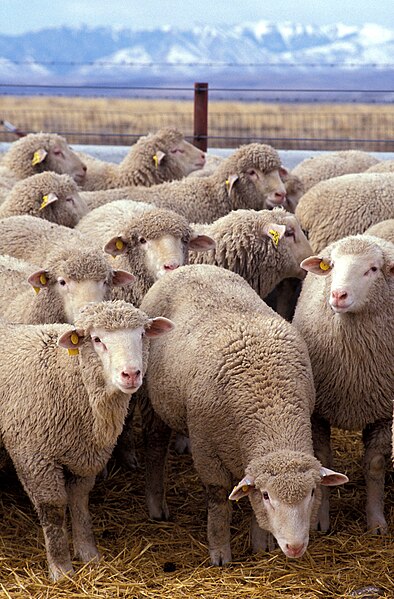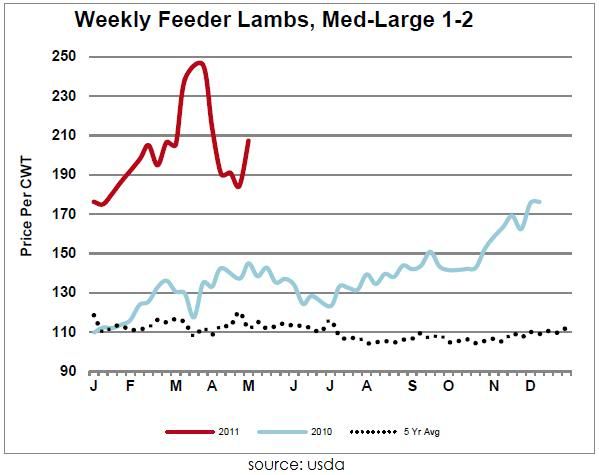
photo: Wikipedia
1,2,3... 5,530,000 head of sheep here in the United States in early 2011. This number is down two percent from 2010 and sheep inventories in the U.S. have been in steady decline for many years.

China, Australia, India, and Iran have the largest modern flocks of sheep. New Zealand's smaller flocks are globally important since they are the world’s largest exporter of frozen and chilled lamb. The consumption of sheep meat accounts for 4.6% of world meat consumption.
The nations with the highest consumption of sheep meat are the Persian Gulf states, New Zealand, Australia, Greece, Uruguay, the UK and Ireland. In these countries, 14-40 pounds per person per annum are consumed. This compares with a pound or less per person per annum here in the U.S., where we eat 65 pounds of beef and 50 pounds of pork instead. Sheep meat is also popular in France, Africa (especially the Maghreb), the Caribbean, the rest of the Middle East, India, and parts of China.
Raising sheep is an agricultural industry less affected by agribusiness than almost any other. Sheep are especially agreeable to the small farmer and the modern sustainable practices farmer. Sheep are also practical for the subsistence farmer.
Sheep are herbivore grazers that are economical, remove invasive weeds, help to reduce wildfires, and their grazing helps forests grow more vigorously. They reduce the need for herbicides and gas-powered machinery. Six sheep can be kept on the amount of land that would be necessary for a single cow or horse.
One-half of the lamb that we eat in the U.S. is imported. We are faced with world lamb import competition, for example, from the Middle East. Although imports to the U.S. from Australia were up 1% in the first quarter 2011, some estimate that overall New Zealand lamb exports were down 24% during the same time period. First-quarter 2011 lamb supplies were estimated to be down 10 percent year-on-year.
At the same time our U.S. sheep herds are in decline, we have a growing ethnic population which demands the meat.
Not surprisingly, U.S. lamb exports have fallen off dramatically.
Such are the laws of supply and demand. Currently, both packers and feeders are strongly competing to buy lambs. Expanding our domestic flock is a several year process, plus, quality is lost if sheep are allowed to overweight.
Consequently, lamb slaughter prices are up 64% in two years and 32% in one year. Feeder lamb auction prices are up 57% in one year. Five years ago, first-quarter lamb production topped 40 million pounds, which was 21% higher than this year.
In March, yearling ewes averaged $280/head and young ewes were $243.59/head.
See the next graph to see how prices have changed over the past five years.

States with highest numbers of sheep are Texas 880,000, California 610,000, Colorado 370,000, Wyoming 365,000, Utah 280,000, and South Dakota with 275,000.
Small-flock sheep production is common throughout the United States and these producers are valuable in the foodshed and eat-local movements.
With growing global competition for oil and fertilizer, agriculture will be forced to transition back to lower-cost, low-energy input products. This means that there should be a bright and growing future for sheep numbers to come back, reversing their declining numbers of recent decades, here in the U.S.
K. McDonald
sources: Sheep, lamb markets soar, wikipedia, Hot Market Sustainable, Australian sheep meat.